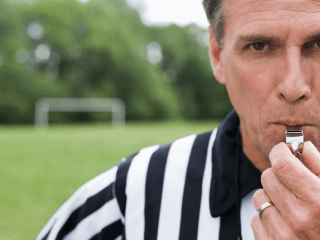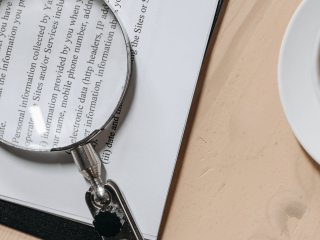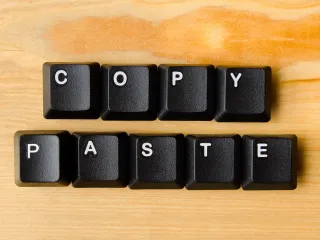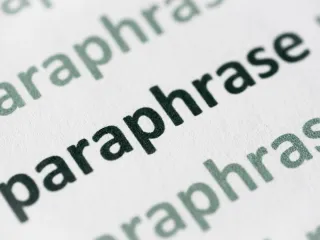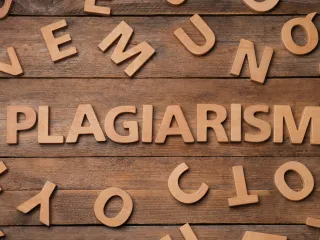What Can Be Plagiarized?
Well, nothing can be. Plagiarism is the use of work that does not belong to you while claiming it as your own. It is not only the use of selected words that have appeared elsewhere. Plagiarism is stealing ideas, photos, music, videos, and any other work belonging to another creator that the perpetrator is claiming as their own.
Plagiarism should not be confused with legitimately using common knowledge. You do not plagiarize when you state historical facts known to most people. Give attribution when it is more advanced information.
For example, in writing an essay on US history, you do not have to cite sources that identify the date the Declaration of Independence was signed. When it refers to anything else important about the date or of the times, then you must give the correct attribution of the sources.
Another action that is not considered plagiarism is using the information from another work and adapting it for your purposes, such as using your wording and particular vocabulary and acknowledging the source. Giving due credit to the source material for your conclusions avoids any charges of plagiarism.
Common Types of Plagiarism in Higher Education
There are numerous common types of plagiarism in academia. The following are the most common examples:
-
direct plagiarism
-
accidental plagiarism (versus intentional plagiarism)
-
source-based plagiarism
-
patchwork plagiarism
-
self-plagiarism
-
paraphrasing
Direct plagiarism is the most aggressive. The writer takes everything from the source material word-for-word without attribution. If some of the material is modified or some passages deleted, the work is still primarily that of another person and is still their original work. It is also called intentional plagiarism and is probably the most common example. Former First Lady Melania Trump copied parts from a speech earlier given by another former First Lady, Michelle Obama. Trump copied paragraphs, as well as the themes.
In accidental plagiarism, the writer neglects to cite the source material, misquotes the source, unintentionally paraphrases it, or omits proper attribution. It differs from direct plagiarism because it is a mistake or is careless. One famous example of this type is when George Harrison, a former member of the legendary group, the Beatles, was successfully sued for accidentally plagiarizing the melody from “He’s So Fine” by The Chiffons.
Source-based plagiarism involves using multiple sources while only attributing to one by mistake. Another example of this is fictitious quoting, often done to give false credence to the idea. Monica Crowley, selected by former President Donald Trump for service in his White House as Senior Director of Strategic Communications for the National Security Council, was accused of doing this for her dissertation written in 2000. She copied from multiple sources with the inappropriate organization of citations. She was also accused of direct and patchwork plagiarism (see next example) for her 2012 book, “What the (Bleep) Just Happened?”
In patchwork plagiarism, the writer copies from several sources and rearranges the material, pasting them in their order while not attributing the source material. It is closely related to direct or intentional plagiarism. It is sometimes also called ‘quilted’ plagiarism as the final document resembles a quilt of multiple, disparate sources all copied and pasted by the writer into their work. Jane Goodall, a famous anthropologist, was accused of this when she published her book ‘Seeds of Hope.’ Goodall copied material from various sources. The book was revised to correct this.
Self-plagiarism is when an author reuses their own work and passes it off as new. The final document incorporates multiple sources of the previous work and is depicted as the original. The author compounds this by failing to secure permission to reuse the rights from whomever originally solicited it, such as previous college professors, or even the publisher of the work, should it have achieved prior publication. Jonah Lehrer was accused of this when he failed to cite his earlier work for an article he had written for The New Yorker.
Paraphrasing is plagiarism, even though it may initially seem innocuous. When you reword phrases, sentences, or whole paragraphs, and then pass them off as your own without proper attribution to the source material, this is considered plagiarism. Using quotation marks is considered as a way of deflecting any suspicion. It does not remove the duty of proper attribution, however. Before they instituted the requirements for reference links and editorial paper trails for correct attribution, Wikipedia was accused of this; along with many of the other types described above.
Consequences of Plagiarism in College
There are numerous penalties for plagiarism in college. Expulsion is amongst the more serious consequences. It may not happen to a student if it is their first time; in such cases, a failing grade may be the only punishment. If the student persists and is found guilty again, academic probation or other sanctions may be the penalty.
Nevertheless, copying word for word the work of others and portraying it as your original work is dishonest and deceptive and perhaps is considered more the behavior of students in high school. Graduate students most of all have a duty to establish their academic credentials and reputation if they wish to progress further along in academia.
In the publish-or-perish pressure of higher education, where institutions base their reputation upon the academic credentials of their professors, it is not unheard of for a faculty member to be found guilty of plagiarism in various forms. In higher education, the integrity and reputation that one achieves by using original research are destroyed by charges of plagiarism. Therefore, the risk is not worth it. What took years to build and develop can take even longer to repair. There are useful and easy ways to avoid these costs.
Easy Ways to Avoid Plagiarizing
There are numerous ways any college student can avoid plagiarizing and preserve academic integrity and honor. Traditional options include the proper citation of sources, using your own words as much as possible along with the correct attribution to the source material, and the use of formatting manuals such as the MLA Handbook, the APA Style Guide, or the Chicago Manual of Style.
There are also more contemporary methods by which one can avoid plagiarizing. Using plagiarism detection software is recommended. One such example is QueText, an online plagiarism checker with a dedicated citation generator.
Quetext’s custom citation generator helps cite sources and gives proper attribution. Instances of plagiarism are detected, and it enables writers to automatically generate the correct citation inside the text with the correct formatting. With the correct use of such a tool as QueText, there is little reason why any writer in academia should fall prey to plagiarism. It identifies unoriginal passages providing the ability to correct issues.
QueText offers tools and protection a writer needs when there is just so much information out there online, and the temptation to just copy and paste to meet deadlines or due dates is prevalent.
When you consider the importance of academic integrity, not only your own but that of your academic institution, using tools such as QueText are invaluable aids in keeping yourself free from charges of plagiarism. It greatly reduces the risks to your career and further advancement and is well worth obtaining.
What To Do If You’re Accused of Plagiarizing
Sometimes college students are accused of plagiarizing. However, an accusation is not a conviction. Knowledge is crucial in this event. It is helpful to know the various forms of plagiarism and use that information to defend your work.
Knowing the plagiarism policy of your school is critical. See if your institution’s policy has outlined a set of actions that will be taken in response the various forms of plagiarism. Does it allow for the rewriting or editing of the academic work? If you’ve kept your research notes and the various versions of your work throughout the numerous drafts you’ve written, you may even be able to prove that your work is original. In any case, the goal is for you to uphold your—and your institution’s—academic integrity.


